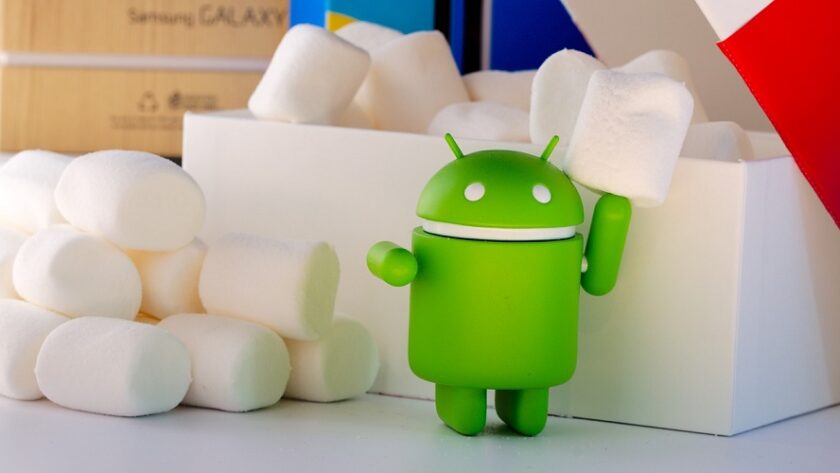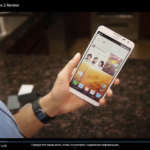The consumer’s logic in choosing a product works the way sellers want it to work, just the way they want it to work and nothing else. We’ve all become accustomed to the fact that every product in every category has its own rating, expressed in numbers or prefixes to the base name. You know what I mean, we’d much rather buy the Wonderphone X Pro 11 Max Turbo than just the Wonderphone, which is obviously flatter, in many ways, just because of the lack of additional inserts in the name. If you look at the world from this perspective, the division into products for the poor and the rich happens even in the simplest things, in the simplest electronic peripherals. Do you think it doesn’t work? Sure it works, I remember a dialogue with a gentleman many years ago who was very proud to buy a microSD Class10 memory card for his phone that had just gone on sale. He was not a photographer, had never thought about any classes of any memory cards, and his requirements for his phone were simple and straightforward: “How many songs can it hold?”, “Is the screen color? And how many colors?”. That user did not understand anything in technology, did not understand the advantage of the volume over the speed of recording on memory cards in the phones of those years, did not understand that the “number of colors” in the screen with 240×320 pixels matrix does not play any role compared to their calibration, visibility in the sun and viewing angles. Those days are gone, but ordinary consumers have not changed at all, they still believe in the magic of numbers, classes and digits. Why this long passage? Because Google seems to have decided to take part in dividing its product, the Android OS with GAPPS, into versions for the rich and the poor. It sounds pathetic and biased, but my conscience doesn’t bother me at all.
Where did it all start? Each release of a new version of Android is accompanied by the release of technical documentation, a kind of requirements for smartphone manufacturers to comply with if they want to get Google services in their products. These requirements are called CDD (Compatibility Definition Document) and are published in the public space on the eve of the official release of a new version of the Android OS. This time we expect a mass release of Android 12, which, although it appeared on some devices after the update, as part of the beta testing, but no smartphone with this OS on board initially has not yet been released for sale.
We’ve looked at this document in previous years, as part of speculation about when Google would drop support for QVGA screen resolutions, 256 MB RAM, 4 GB of main storage and other horrible stuff. Of course, Google won’t give up the lame duck called Android GO to introduce its services to as many devices as possible, but it’s never been crucial to the market as a whole. Worryingly, right now we’re seeing the introduction of a new parameter in the Android 12 CDD, the very digitality that will make some phones more “premium” and turn others into second-fresh goods in the eyes of the consumer. And that’s not a bad thing, since consumers themselves are unwilling to delve into technology and learn to distinguish between bad smartphones and good ones. You can read the entire Android 12 CDD here, about the bit rate here, but in the meantime we’ll decipher the technical language into consumer language. The new parameter, which is sure to turn into a marketing advantage, is called “Performance Class”, although I would call it simpler, such as this.
Google introduces the concept of “normal phone” to supported devices
This parameter at the code level has always been present in Android, under one name or another. It actually came from the digital signature of smartphone hardware devices, their drivers, etc. For example, when you watch YouTube, you are shown a picture in 1080p resolution, if you have a screen with the same resolution. If a device had a bad chipset and insufficient RAM, which would freeze other applications, this did not bother Google. The main thing was that the device formally met the published minimum requirements of the CDD.
Over the past years we have seen a lot, constantly broadcasting to 720p screen FHD-image (there was such an experiment), implemented at the level of the graphics driver, saw outdated memory in smartphones with powerful chipsets, and certainly such a phenomenon as interpolation (frame stretching) in the cameras were found in abundance. And now the time has come when Google has decided to clean up and somehow tame the bullheaded manufacturers. In the new CDD for Android 12 there are footnotes and clarifications, which introduce harmonization and raise the minimum level of requirements. It looks like this (conventionally), “If a smartphone does not meet performance class 11, then do not install Google Assistant and 128 MP cameras in it from the factory.” This very performance class will begin to play a leading role, both in filling new smartphones with features and in the choice of the buyer (hopefully it will be written on the boxes). The highest performance class now is the 12th, and on its differences from everything that came before, I suggest you look at the table. Pay attention, the minimum requirements did not go anywhere, which means that the market will continue to have a lot of mediocre devices.
In the very near future, smartphones with less than 6 GB of RAM will be considered something so completely budget friendly. New apps for performance smartphones will not be visible in their Google Play list, even if all other parameters will exceed the minimum requirements. The same applies when the front camera of the smartphone has a resolution of less than 5 MP. All parameters are collected and equated with the concept of “Performance Class”, even if it has nothing to do with performance per se. In other words, Google has shown which phone it considers worthy to receive all its new developments, which happened for the first time, if we forget about the Pixel line of smartphones. This hasn’t happened before at CDD. A smartphone that received a Class 12 when it was released will also receive a Class 13 (which does not yet exist) in the future, if its specs are up to par at that time.
Performance classes have direct compatibility. A device can be upgraded to a newer platform version (Android version) without updating its performance class. For example, a device that originally supports performance class 12 can upgrade to Android 13 and continue to report that it supports class 12 if it does not meet the requirements of class 13. This means that performance class provides a way to group devices together without relying on a specific Android version.
To put it simply, starting with Android 12, your smartphone, even if it is a flagship flagship, can easily cease to be one when the new version of Android is released. Yes, it will come out with a new build update from the manufacturer with a new version of Android, but it will forever remain an outdated 12. Especially if Google’s CDD for Android 14, for example, introduces a requirement to support radar-focused cameras, hypersonic chargers, and 16GB of RAM to comply with the CP-14.
And how hard will it be for Asian manufacturers, having to constantly find a compromise between the cost of components and the desire to give the consumer almost a flagship!
Conclusion
I would like to see the column “Smartphone performance class” on the price tag in the store, and even more how sales consultants will try to explain to the buyer why this phone is a “flagship” if it has a screen worse than 1080p (Class 12 has that too), or the camera cannot shoot 4K video. On the other hand, the manufacturer can cheat by writing “Class 12” on the box, meaning something else entirely, like LTE modem speed.
Friends, does the buyer need the extra quality standard of a smartphone from Google? And most of all we are interested in the opinion of third-party developers of software for the Android OS, what changes (if any) Google’s initiative has made to their activities.



